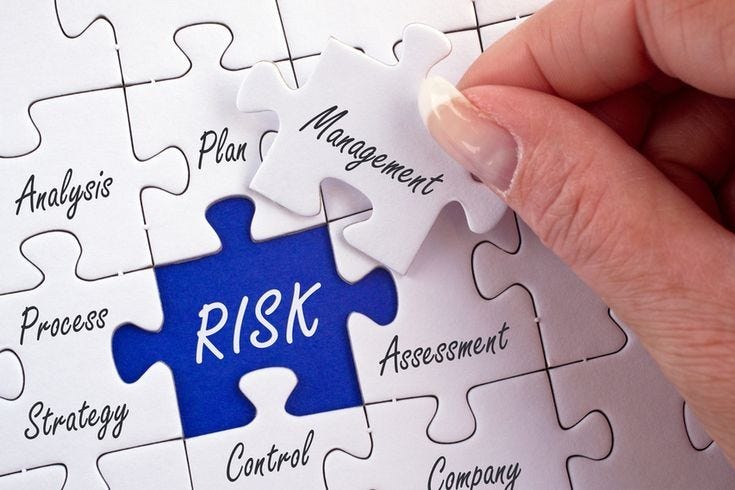Investing always involves risk, whether it is a small change in value or the possibility of losing all of your money. To be able to manage risks properly, you need to understand what they really mean. Investing involves the risk that the investment will not perform as expected, which can lead to lower returns or even losses. Professional investors know that risk cannot be completely avoided, but it can be recognized, measured, and managed. The first step to making wise financial decisions is to understand that risk is a common part of investing.
Understand the Risk You Can Tolerate
The first step to professional financial risk management is to understand how much risk you can tolerate. Risk tolerance refers to how much risk or loss you are willing to take to achieve returns. This depends on personal circumstances, such as age, income, financial goals, personality, etc. Young investors saving for retirement may be willing to take more risk for higher returns. On the other hand, investors who are about to retire want safer and more stable investments. Professionals tailor their portfolios to their risk profile to ensure they don’t put themselves under too much pressure or get into financial trouble.
Diversify your Investments to Reduce Risk
Diversification is one of the best ways to reduce investment risk. You don’t put all your money into one stock, sector, or asset class; instead, you spread your money across several different investments. That way, if one investment underperforms, other investments can do well, reducing the overall impact on your portfolio. Professional investors spread their money across multiple sectors, industries, asset classes, and even geographies. This approach doesn’t guarantee returns, but it does reduce the risk of big losses and provides a more stable investment journey.
Set Clear Financial Goals
Professional investors always have a plan before they enter the market. Having clear and achievable financial goals can help you determine where you want to invest and how much risk you want to take. Are you saving for your child’s education, a house, or your retirement? Each goal can have a different timeline and level of risk. Long-term goals allow you to invest more aggressively, but short-term goals require you to manage your money more carefully. Knowing what your money is for can help you stay on track and avoid making unsafe decisions based on market changes or short-term emotions.
Know Your Assets When Investing
To excel in risk management, you must conduct thorough research. It’s crucial to understand how investments work, what they’re worth, and what the risks are before you invest your money. Company performance, economic trends, and market sentiment are just a few factors that can affect stocks. Bonds are generally safer, but interest rates and credit quality can change that. Real estate values and market conditions can also make real estate risky. Professionals dedicate their time to thorough research and thoughtful consideration of their investments, avoiding the common mistake of blindly adhering to a trend or fad without a thorough understanding of the fundamentals.
Use Stop-loss and Risk Management Tools
Professional investors often use certain tools to minimize losses. A stop-loss order is one such mechanism that automatically sells an asset when its price falls below a certain point. This strategy prevents small losses from becoming larger. Setting position limits (limiting the amount of money that can be invested in a single asset in a portfolio) and using options to hedge potential losses are two other techniques. These methods require some technical knowledge, but even a little expertise can help individual investors better manage risk and keep their portfolio safe during market fluctuations.
Don’t Let Emotions Influence your Investment
Investing can be risky because of emotions. People sometimes make rash decisions out of fear and greed, such as panic selling when the market is falling or buying without thinking when the market is rising. Professional investors do everything possible to integrate emotions into their plans. They stick to their strategies, don’t chase trends, and stay disciplined even when the markets are unpredictable. To become an expert in risk management, you must learn how to regulate your emotions, remain patient, and think long-term. When markets fluctuate, staying calm often leads to better results than reacting to short-term noise.
Investing Consistently Rather Than Timing the Market
Many investors try to time the market by buying low and selling high, but even professionals struggle with this. Investing regularly, regardless of market movements, is a better way to manage risk. Dollar-cost averaging is a method of investing in the same amount of stock each month. This method can help minimize the impact of market fluctuations because you buy more stocks when prices are low and fewer when prices are high. Consistent investing can help you stay disciplined and avoid the risk of trying to predict market movements, a dangerous and often unsuccessful approach.
Conclusion
Being good at managing investment risk doesn’t mean you have to avoid it altogether. Instead, you need to learn how to manage and reduce risk to achieve your financial goals. Understanding your level of risk, diversifying your investments, staying informed, and controlling your emotions can help you make better investment choices and avoid costly mistakes. Professionals have plans for dealing with risk. They use tools and information to protect their wealth and stay healthy, even when the market fluctuates. With time, experience, and a thorough plan, you too can confidently and professionally manage your finances to build a stronger, more secure financial future.
FAQs
1. What is the most dangerous thing about investing?
The biggest risk is that you can lose money. Losses can occur from a market downturn, incorrect investment choices, or unexpected economic developments. But you can limit your risk by making careful plans and diversifying your investments.
2. Can I invest completely risk-free?
No, all investments involve risk. The key is not to be completely risk-free but to approach risk in a way that suits your comfort level and financial goals.
3. How do I determine how much risk I am willing to take?
Your age, financial situation, expectations, and feelings about market volatility all affect the level of risk you can tolerate. You can use a self-assessment tool or consult a financial advisor to find out.
4. How often should I rebalance my portfolio?
In most cases, it is best to rebalance your portfolio at least once a year, or when market volatility causes a significant change in asset allocation.
5. Is it dangerous to invest in a falling market?
In the short term, a downturn can be risky, but it can also be a good time to buy quality stocks at lower prices. By focusing on long-term goals, you can be less afraid of short-term market downturns.




